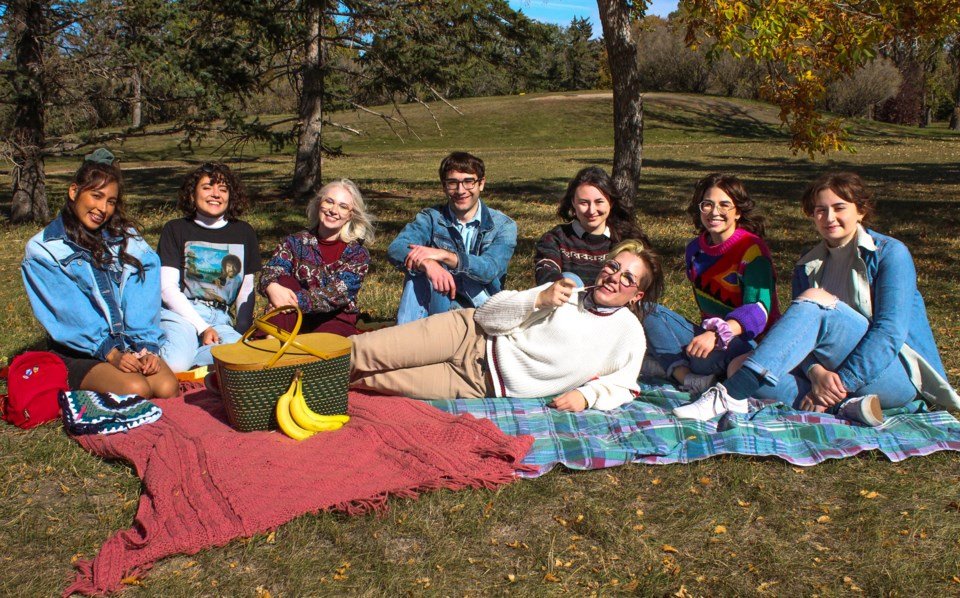
“[We’re] trying to recreate this festival [and] almost pay homage to the past festival and keep its essence, but also be something entirely new.” – co-organizer Jillian Bader
REGINA — Co-organizer and filmmaker Jillian Bader was excited to step into the Shumiatcher Open Stage Thursday night for the opening of the Living Skies Student Film Festival, to celebrate the talents of up-and-coming student filmmakers.
“I think everyone’s excited to have in-person screenings,” said Bader, prior to the event’s debut. “I just feel like it makes the festival even more exciting.”
Living Skies takes place annually through the University of Regina film program, as a festival organized by students to spotlight students. It’s one of the longest-running student film festivals in the country, celebrating 34 years.
This will mark the first time that the festival is being offered as a hybrid event, said Bader, with audiences welcome to join virtually from home or come down to the Shumiatcher — known locally as the Shubox — on campus to grab a seat and watch the broadcasted events live.
The festival, set to offer workshops and screenings of films submitted from across the globe, will be continuing from March 3-5, with three exciting guests and 67 films selected for this year’s shortlist.
“The theme this year is ‘Reunion,’” said Bader. “We just haven’t seen a lot of people in a long time and really wanted [the festival] to feel like a family reunion.”
For Bader, who has played the role of audience member, filmmaker and now organizer for the event, it’s an exciting moment to see the festival evolve into something new.
“It’s kind of daunting [as an organizer], in the sense that you’re trying to recreate this festival [and] almost pay homage to the past festival and keep its essence, but also be something entirely new,” said Bader. “But I think it’s been a really rewarding challenge.”
She said organizers have seen a surge of interest in the festival in the past few years, especially after things went virtual two years ago and audiences outside of Regina were suddenly able to tune in more easily.
So while organizers were happy to welcome audiences back into the Shubox, keeping ahold of some online aspects was important to them, said Bader.
“It’s nice to have international students who submitted be able to view our festival,” said Bader. “And then relatives in America, the U.K., they can come watch the films their friends have made, so I think it’s definitely getting more attention.”
Around 1,100 film submissions from 90 countries were received by the festival selection committee this year, and 15 films from University of Regina students were selected as finalists, including Bader herself.
“We have a really good amount of submissions from the U of R , which we love including,” said Bader. “We’re really thankful for that because it means so many more people are out for Best of Saskatchewan, one of our awards.”

Bader described Living Skies as an opportunity for student filmmakers to dip their toes into the industry, allowing first-time directors to get involved in a low-key industry event.
“It’s just a really inspiring event to go to, because you get to see all these international films from students your age, and it helps you realize what kind of potential you have,” said Bader.
“With a lot of student filmmakers, it can be kind of nerve-wracking to get involved with the film industry, or even the arts community in Saskatchewan,” she continued. “But seeing what other students have to offer and seeing the sense of community played out here at our festival, students feel more comfortable getting involved, reaching out, asking to collaborate.”
The festival kicked off Thursday night with a workshop on documentary filmmaking with acclaimed Canadian filmmaker Su Rynard, followed by screenings of several festival films.
Continuing on Friday, the Saskatchewan Filmpool will host a roundtable discussion about the filmmaking industry, followed by another evening of film screenings.
Saturday will close out the festival with a question and answer event with Danis Goulet, director of film Night Raiders which debuted at the 2021 Berlinale and the Toronto International Film Festival, where Goulet received a TIFF Tribute Award.
“[Goulet’s] film is having really great success in both Saskatchewan and Canada, so we’re very excited to have her,” said Bader.
The evening will end with screenings of the final group of films, followed by presentation of the festival’s awards.
Living Skies Student Film Festival is an event entirely free of charge, and more details about this year’s schedule and selected films can be found online through the festival’s website. Attendees choosing to








